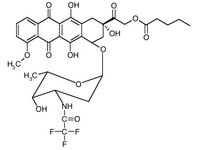To measure micromotion of an orthopaedic implant with respect to its surrounding bone, Roentgen Stereophotogrammetric Analysis ( RSA) was developed. A disadvantage of conventional RSA is that it requires the implant to be marked with tantalum beads. This disadvantage can potentially be resolved with model-based RSA, whereby a 3D model of the implant is used for matching with the actual images and the assessment of position and rotation of the implant. In this study, an improved model-based RSA algorithm is presented and validated in phantom experiments. This algorithm is capable to process projection contours that contain drop-outs. To investigate the influence of the accuracy of the implant models that were used for model-based RSA, we studied both Computer Aided Design (CAD) models as well as models obtained by means of Reversed Engineering (RE) of the actual implant.
The results demonstrate that the RE-models provide more accurate results than the CAD models. If these RE models are derived from the very same implant, it is possible to achieve a maximum standard deviation of the error in the migration calculation of 0.06 mm for translations in x- and y-direction and 0.14 mm for the out of plane z-direction, respectively. For rotations about the y-axis, the standard deviation was about 0.1 degree and for rotations about the x- and z-axis 0.05 degree. For the femur component, it was also possible to reach these accurate results for non-scanned components. The results show that the new algorithm is an improvement with respect to a study we presented earlier [I].
Studies with clinical RSA-radiographs must prove that these results can also be reached in a clinical setting, making model-based RSA a possible alternative for marker-based RSA.
[1] Valstar.E.R.. Jong.F.W.d.. Vrooman.H.A., Rozing.P.M.. and ReiberJ.H.C. (2001) Model-based roentgen stereophotogrammetry of orthopaedic implants. J.Biomech. 34.715-722.
B.L. Kaptein. E.R. Valstar. B.C. Stoel, P.M. Rozing, J.H.C. Reiber
Department of Orthopaedics, Leiden University
Medical Center (LUMC), PO Box 9600, 2300 RC
Leiden, The Netherlands
Copyright British Editorial Society of Bone & Joint Surgery 2004
Provided by ProQuest Information and Learning Company. All rights Reserved



